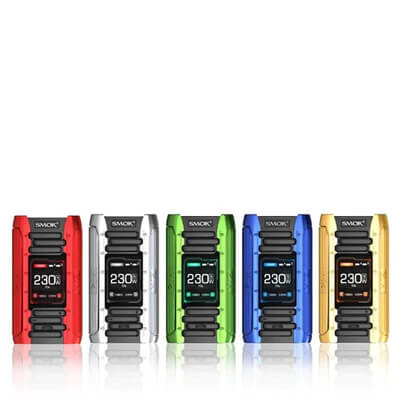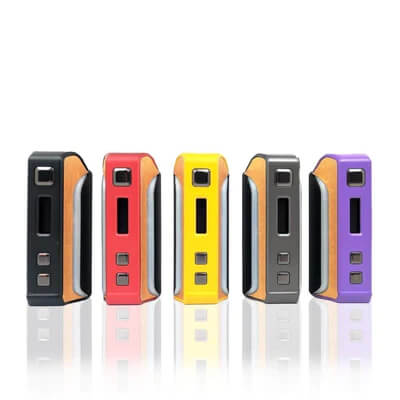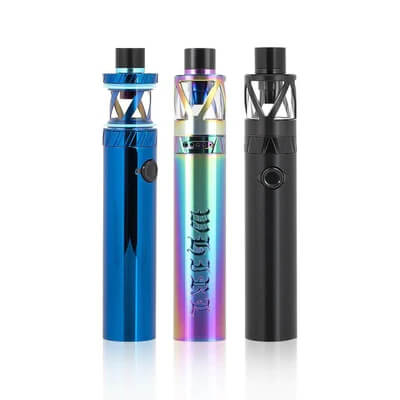Top Conduction And Convection Vapes
4th Oct 2021
Top Conduction And Convection Vapes
When you’re deciding on what kind of vape to buy, you’ll need to factor in the way they heat your vape juice. There are two main ways that this is done - convection or conduction. When comparing convection vs conduction, you’ll notice a range of important differences. In this guide, we’re going to show you what those are, and what they mean for your vaping experience.
It’s important to begin with definitions and explanations, but once you get through those, you’ll see a list of vapes we’ve chosen that will be good for beginners and advanced vapers alike. That way, you can make an informed choice.
Here are the sections our guide will include:
- - Convection vs Conduction vs Radiation
- - How Convection Vapes Work
- - How Conduction Vapes Work
- - Which Vaporizer is Right For Me?
These sections will provide you with the relevant information you need to make a decision about the type of vape you want to buy, and the final section will give you the list of vapes we recommend.
Convection vs Conduction vs Radiation
Radiation is often mixed into conduction vs convection comparisons, and it’s essential that we start by covering it so that you know what not to look for. Radiation is the only process of the three covered here that doesn’t involve direct contact with an object or fluid.
That’s what the term ‘radiate’ means - to spread out from a point. Often that’s through the air. Conduction and convection don’t work like this. Conduction involves direct contact between objects for a heat transfer to take place, and convection involves a transfer of heat within fluid. Fluid such as vape juices.
Convection vs conduction is a reasonable comparison because it’s clear how vaporizers can use each method. Direct contact between vape juice and the heat source applies in the case of conduction, and a medium like steam transfers the heat in the case of convection.
However, radiation isn’t going to do much good within the enclosed space of a vaporizer, so vaping simply doesn’t involve the process of radiation. That’s why it’s important to rule it out as a factor at the beginning of this guide. You should now be aware of some of the key differences between convection vs conduction, as well as between convection vs conduction vs radiation.
How Convection Vapes Work
Now that we’ve ruled out radiation, we can look in more detail at the first of our two methods. The first one we’ll cover is convection. Convection is the slightly more complicated vape heating method because it takes longer to heat the vape juice and involves extra components.
Convection vaporizers rely on fluids that move through the vape mod, like steam. The heat is carried within the medium and provides the heat. Convection vs conduction comparisons reveal that convection vapes typically lack temperature controls and take extra maintenance.
But the most relevant difference for you as a vaper will be the heating time. Vaping with a convection vape takes more than 10 minutes of waiting for them to heat up. Conduction vapes don’t take this long.
Convection vapes also tend to have additional chambers for heat transfer, which can increase their cost somewhat. That means you have to choose carefully if you want a convection vape.
However, because convection vapes don’t touch your herbs directly, they won’t burn, which means you don’t have to be so careful when you’re using them. That makes them a good choice for beginners, even if you have to pay out more initially.
How Conduction Vapes Work
Now that we’ve explored convection vapes, it’s time to look at conduction vs convection vapes. Conduction vaporizers have existed for many years, and most vapers are familiar with them. They are seen as the traditional way to vape, and many older vapers have no interest in changing to convection vapes.
Unlike convection vapes, conduction vapes directly touch your herbs to heat them. Your cannabis will touch the walls of the vape mod, which will transfer enough heat to turn it into vapor. Because of how conduction works, you can fine-tune the temperature intensity, which is a significant advantage compared to convection vapes.
Another advantage when comparing a convection vs conduction vaporizer is that conduction vapes don’t need much maintenance because their components are simplistic. They also heat in around half the time of a convection vape and don’t cost as much to buy. You might be thinking there’s no doubt convection vapes are the worse choice, but there’s a catch.
Conduction vapes can burn your herbs when they’re in direct contact with them, and not only can that affect the taste and scent, it can also cause you to suffer from smoke inhalation. So you need to weigh that up when you’re picking a vape.
Which Vaporizer is Right For Me?
Based on our research to write this article, we’ve got two options when comparing a conduction vs convection vape. If you’re a complete beginner and don’t know much about vaping, we’d recommend convection vapes. Despite their disadvantages compared to conduction vapes, the fact they don’t burn your herbs gives you the ability to familiarize yourself with vaping without suffering from burnt herbs and smoke inhalation.
Our second option is if you’re more experienced. In this case, you should select conduction vapes because they let you fine-tune the temperature. If you know what works for you when vaping, you’re very unlikely to burn the herbs, so that makes conduction vapes a great choice.
SMOK E-Priv 230W Box Mod
SMOK E-Priv 230W Box Mod is a neat choice for anyone who wants to do sub-ohm vaping, with resistance levels as low as 0.05ohms. It’s also an excellent choice for those who are comfortable using traditional 18650 batteries. It has a nice appearance, with multiple color options and a digital display screen that’s nearly 1.5” in size.
It’s also got an adjustable temperature range that covers 200-600 degrees Fahrenheit. When you compare conduction vs convection vapes, and you see a temperature range like this, you’re dealing with a conduction vape. The wattage ranges from 1W-230W, and the voltage from 0.5V-9V.
Pioneer4You - iPV Velas 120W Mod
With a Pioneer4You - iPV Velas 120W Mod, you’re getting a lot of features. It starts with the sleek and stylish outward appearance, with colors that pop out at you. You’ll also have the option to save five output curves. However, you’re not getting as much wattage as the previous vaporizer, with a maximum of 120W.
The resistance levels vary from 0.15-3ohms, which is quite flexible, and you’ll also benefit from a range of smart features, like an OLED display, indicator for battery life, and an LED color strip. In terms of doing a convection vs conduction vaporizer comparison, this is a conduction vaporizer with an adjustable temperature ranging from 212-572 degrees Fahrenheit.
UWell - Whirl 20 AIO Starter Kit
If your vaping style means you prefer a UWell - Whirl 20 AIO Starter Kit, then this is the one for you. It’s $18.99, reduced from $34.99, which makes it a bargain while you can get it. It has a nice color scheme as well, which makes it look high-quality.
Most importantly, it’s ideal for beginners. The wattage is lower, but it has a decent battery capacity of 1600mAh, giving you plenty of chances to experiment. It also has an easily removable tank so that you can refill it without difficulties. We didn’t notice temperature control among its many features, so we assume it’s a convection vape.
Conclusion
You should now know everything about conduction vs convection, and from looking at our list of convection vs conduction vaporizer options, you should also know which one you like the most.
But if you’re still unsure about the conduction vs convection vape debate, then you can head over to one website to find out more, as well as to buy high-quality vaporizers and vaping accessories.




